Invest in the car that’s in your garage
Want a better understanding of what’s driving collector-car values? Sign up for the Hagerty Insider newsletter.
If logic had entered the equation, I wouldn’t have bought a sports car at all. For a 23-year-old barely six months into his first real job out of college, a used Civic would have been sensible. A Forester, maybe, because winters in Michigan are rough. But I wasn’t interested in sensible. Sensible came with a roof.
It was March 2014, five months into my car magazine career. Whether I would ultimately hack it remained an open question. Seven of my coworkers, including current Hagerty Insider managing editor David Zenlea, owned Miatas. Three or four grand was the going rate for a decent NA-generation driver.
That, too, would have been the sensible choice.
Instead, I blew $8300 on a 2001 BMW Z3 2.5 roadster with 71,500 miles. That sum represented more than half of my total savings, mostly earned from years of waiting tables. Several people told me I was making a dumb choice, and that the money I’d have to put into a 13-year-old BMW made in South Carolina would eventually fill me with regret.

They were wrong about the last part. I love this car to pieces, even when it’s in pieces. The time, energy, and investment I’ve put into my BMW over the last decade has been entirely worth it to me.
Car valuation is Hagerty’s bread and butter. Our insights from comprehensive data, we hope, help people make decisions that will allow them to get—or even just keep—a vehicle that makes them happy. But for all our talk about savvy car purchases, we don’t often acknowledge the upshot investing in the health of one’s car: you get to keep driving it.

I’m not talking about a full rotisserie restoration, though that nuclear option is certainly worth it for some. My mantra has been four-fold:
(1) Be religious about basic maintenance.
(2) Address common failure points before they have a chance to wreak havoc.
(3) Fix things promptly when they break.
(4) Drive it as much as possible.
Long did I pine for a Z3, so the last thing that crossed my mind when I finally got it was what it would one day be worth. I’d picked a great example of a fun car and expected German-car ownership costs. The point was to enjoy it. If I lost my shirt, it was because I wanted a really good tan.
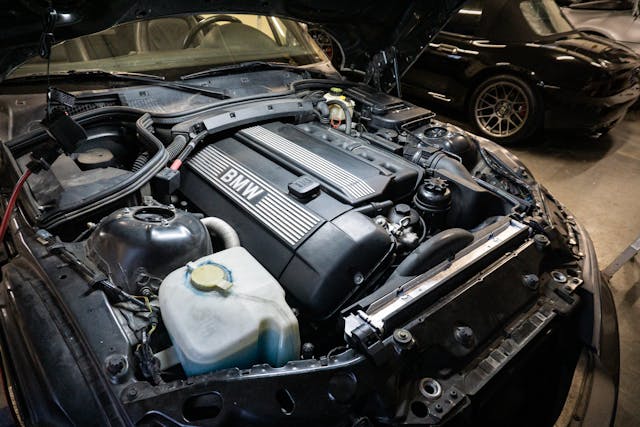
Everything I’ve done to the car myself—from oil changes to brakes, weather-seal repair, headlight bulbs, and new engine gaskets—has been to ensure my spring, summer, and fall are punctuated with weekend spurts of top-down fun. That straight-six song! Those classic proportions! That oh-so-BMW rubber-band-ball shift feel! It doesn’t get old, even as my recently graying beard reminds me I do. And when things go wrong beyond my expertise or bandwidth to handle, I have no problem paying a shop to get the car back on the road ASAP. My rough annual maintenance budget of $1000 sometimes takes a big hit, but usually there’s some left over to roll into next year. So when the choice is between drenching myself in transmission fluid to badly replace a transmission shift-shaft seal and swiping my credit card, I take the latter route.
As a matter of interest, I decided to check—for the first time since buying it—what a five-speed Z3 2.5 in #3 (Good) condition is worth. At the time of purchase, in 2014, $8300 was the exact average value for my car. Not bad for a bright-eyed and bushy-tailed hopeful like me, right? Unlike full-bore M Roadsters and M Coupes, however, ordinary Z3 roadsters like mine were not finished depreciating. Values hit their bottom of $7500 in 2021, eventually rebounding and growing to today’s average of $11,800. Adjusted for inflation, more like $9400.
Lord knows I’m upside down. Just how much so I don’t particularly care to calculate. Maybe it’s the blood rushing to my head, but it’s been a lot more fun than puttering around in a Forester.

Last summer, I realized my Z3 was 21 years old. At that point in its life, Rule #2 applied to a number of components. The entire engine cooling system, for one thing, is suspect on Z3s and related E36 3 Series BMWs at this age or about 80,000 miles. Rubber and plastic pieces like hoses, expansion tanks, and fan blades get brittle and risk cracking, which means overheating that BMW’s aluminum-block inline-sixes do not tolerate well. Brake lines. Motor and transmission mounts. Suspension and differential bushings. This stuff gets tired, but at a rate slower than one can easily notice.
The last thing I wanted was to cook my engine, lose my brakes, or risk damage to my subframe (unfortunately common on Z3s with worn diff bushings, due to spot weld failure). Thanks to a fellow named Bryan Salgado, who runs a popular Z3 and Z4 maintenance group on Facebook, I executed a plan. I ordered a giant, $2900 pile of parts and had them dropped off at Salgado’s home garage in North Carolina, courtesy of a nearby BMW supplier called BimmerBum. He spent three or four days performing all of the necessary work, at a very reasonable rate of $75/hr. Given that my car was something like the eighth or ninth “kitchen sink” project Salgado had done for friends and Z3 club members, I knew I was in good hands.
All told, the work involved a complete cooling system overhaul, replacement of engine and transmission mounts, seat rail bushing repair, stainless steel brake lines, new front control arms, springs, shocks, suspension bushings, differential bushing, and a weighted ZHP shift knob for good measure. My boss, Larry Webster, was skeptical that I’d spent $5500 on an unremarkable Z3.
“Really? It’s worth that much to you?”
“Absolutely,” I said.
And wow, what a difference. I have a story in the works that will get deeper into just how much better the car drove after the kitchen sink refresh, but suffice to say it might drive better now than when I bought it.

Naturally, a wayward traffic barrel rolled into the left lane outside of Louisville, Kentucky, on my way back to Michigan. Nobody was hurt, which is what really matters, but I can’t say I was thrilled to see a cracked bumper cover and dented driver’s door, among other damage. It’s insured (thanks, Hagerty!) and it will be fixed. The car was never meant for the concours lawn, anyway.
I have no plans to part with my Z3, so all I care about is that I can drive it when spring comes around. Those precious moments behind the wheel are the only return on investment I care to track.
***
Check out the Hagerty Media homepage so you don’t miss a single story, or better yet, bookmark it. To get our best stories delivered right to your inbox, subscribe to our newsletters.
Via Hagerty Insider
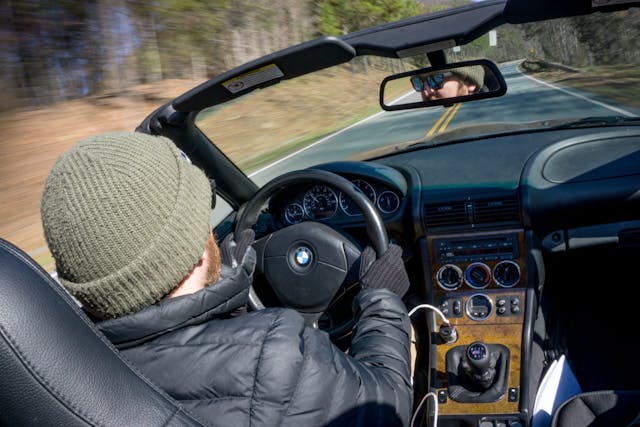

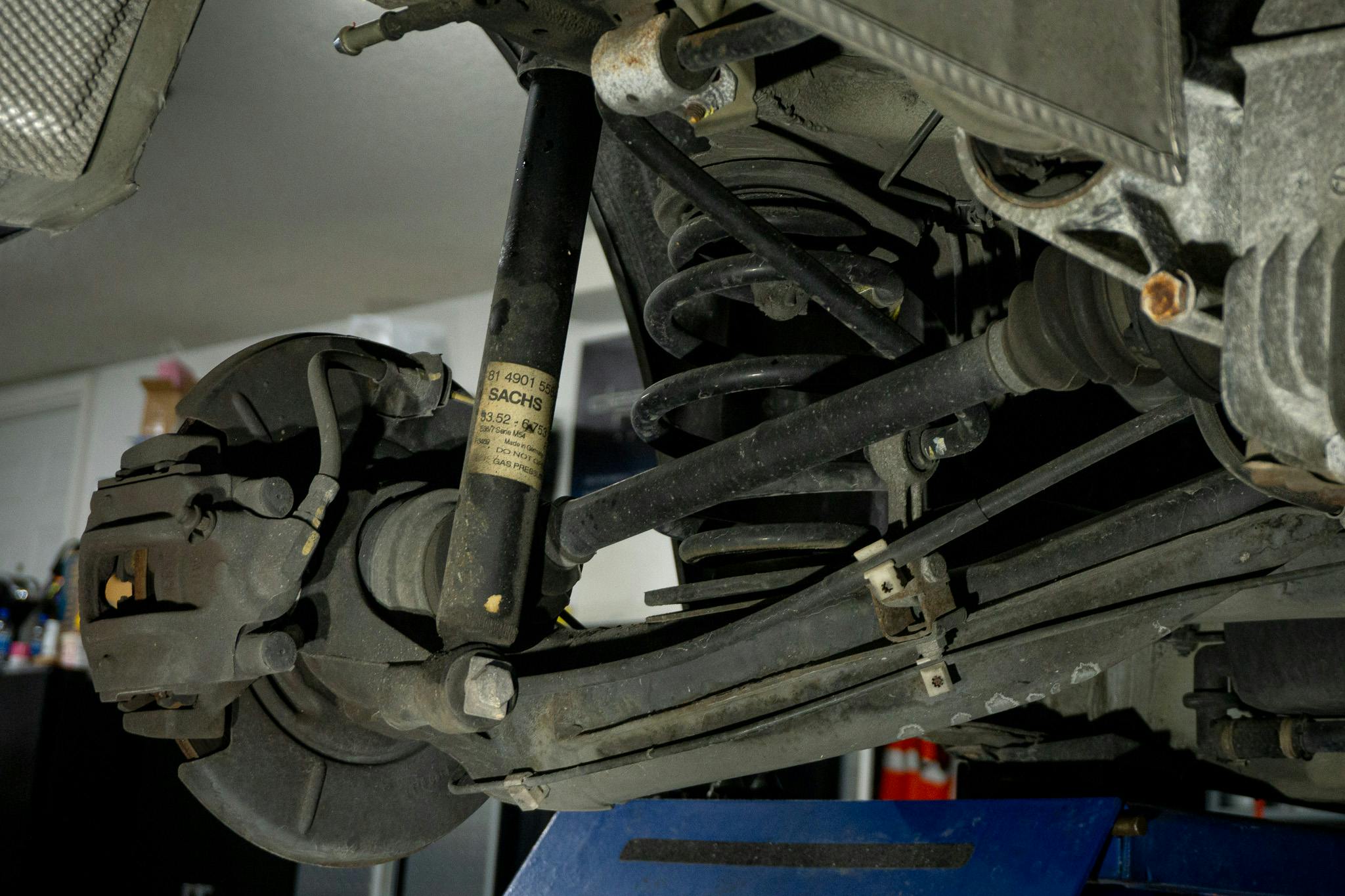
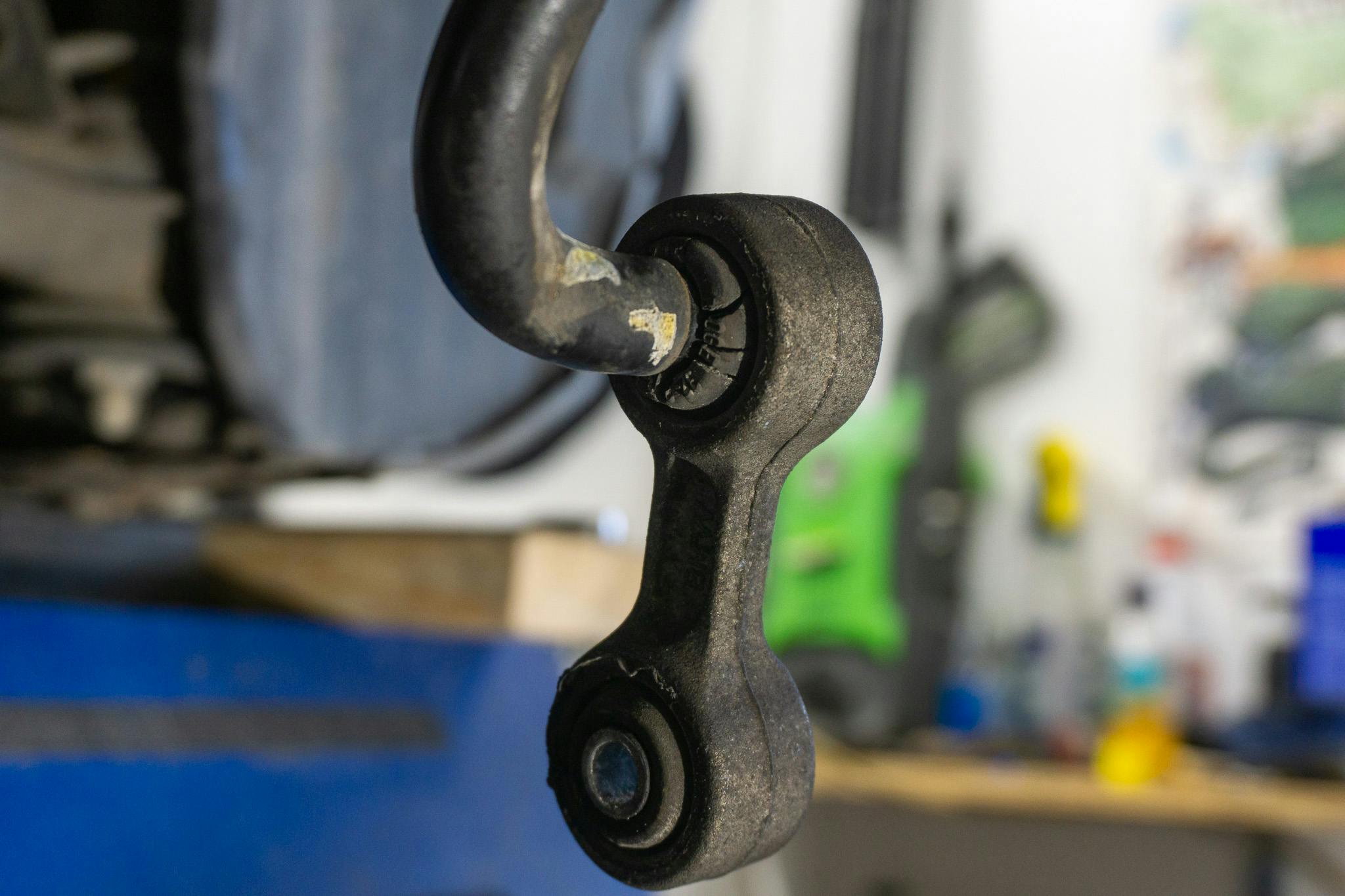
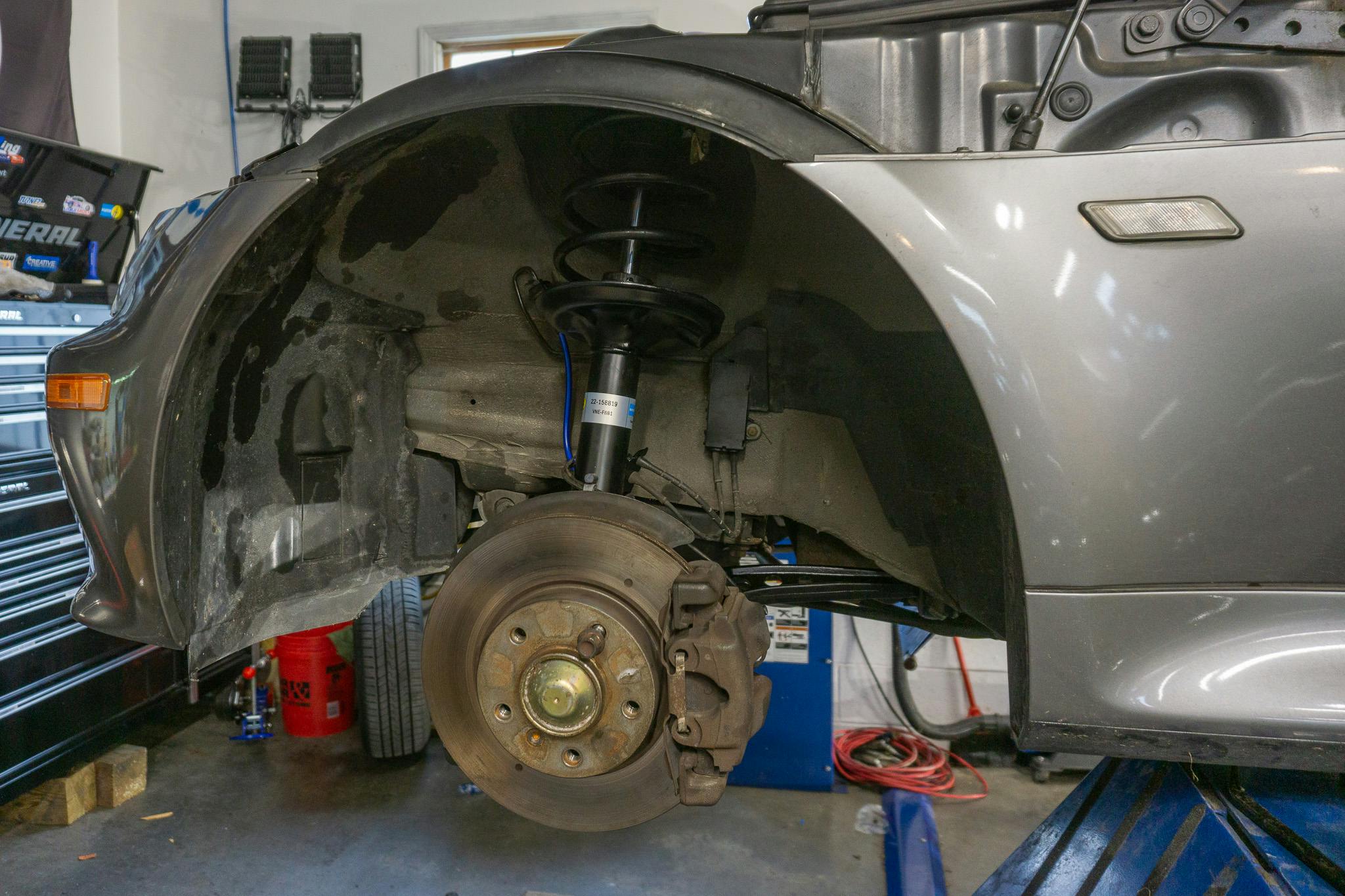

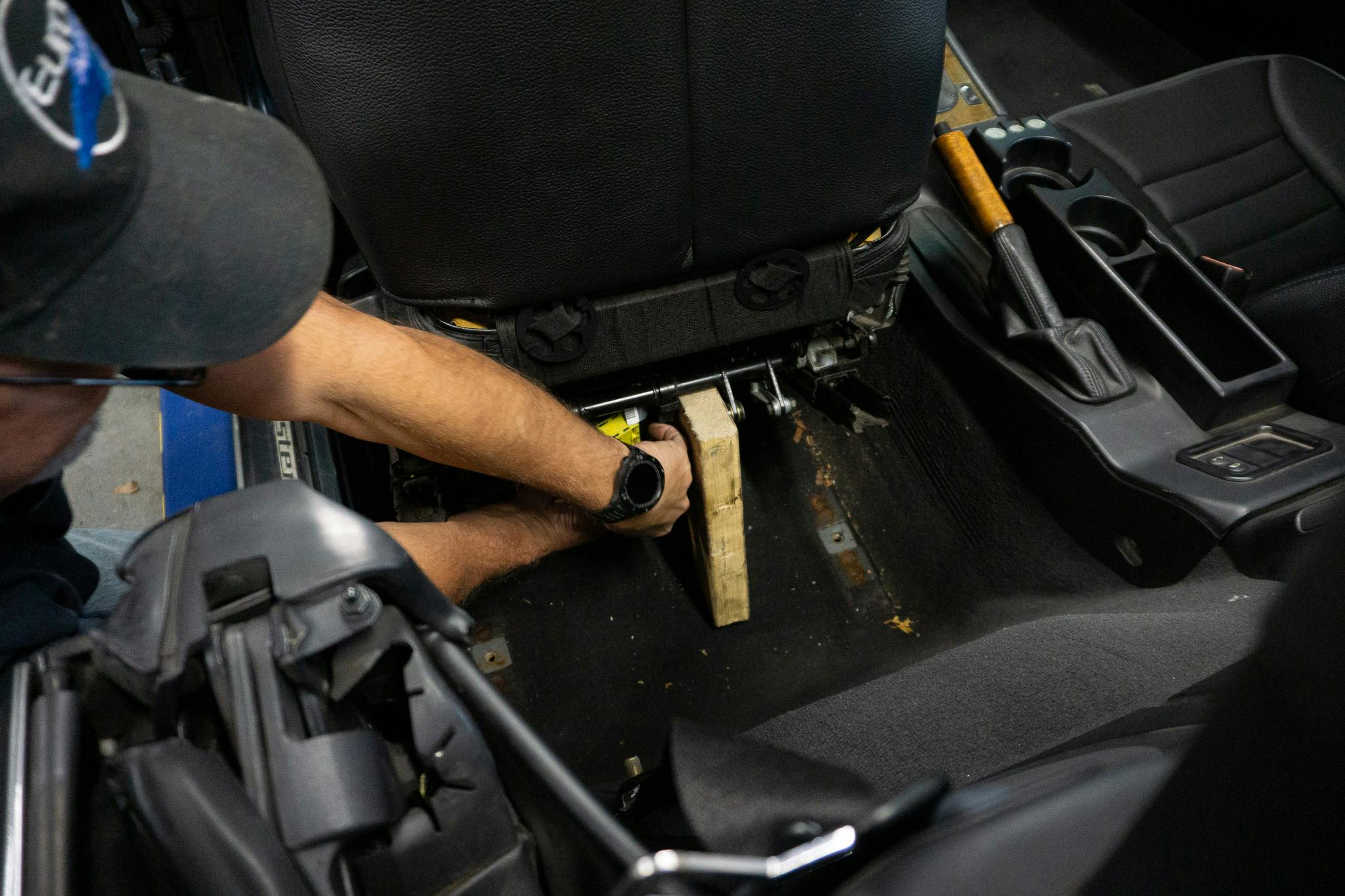

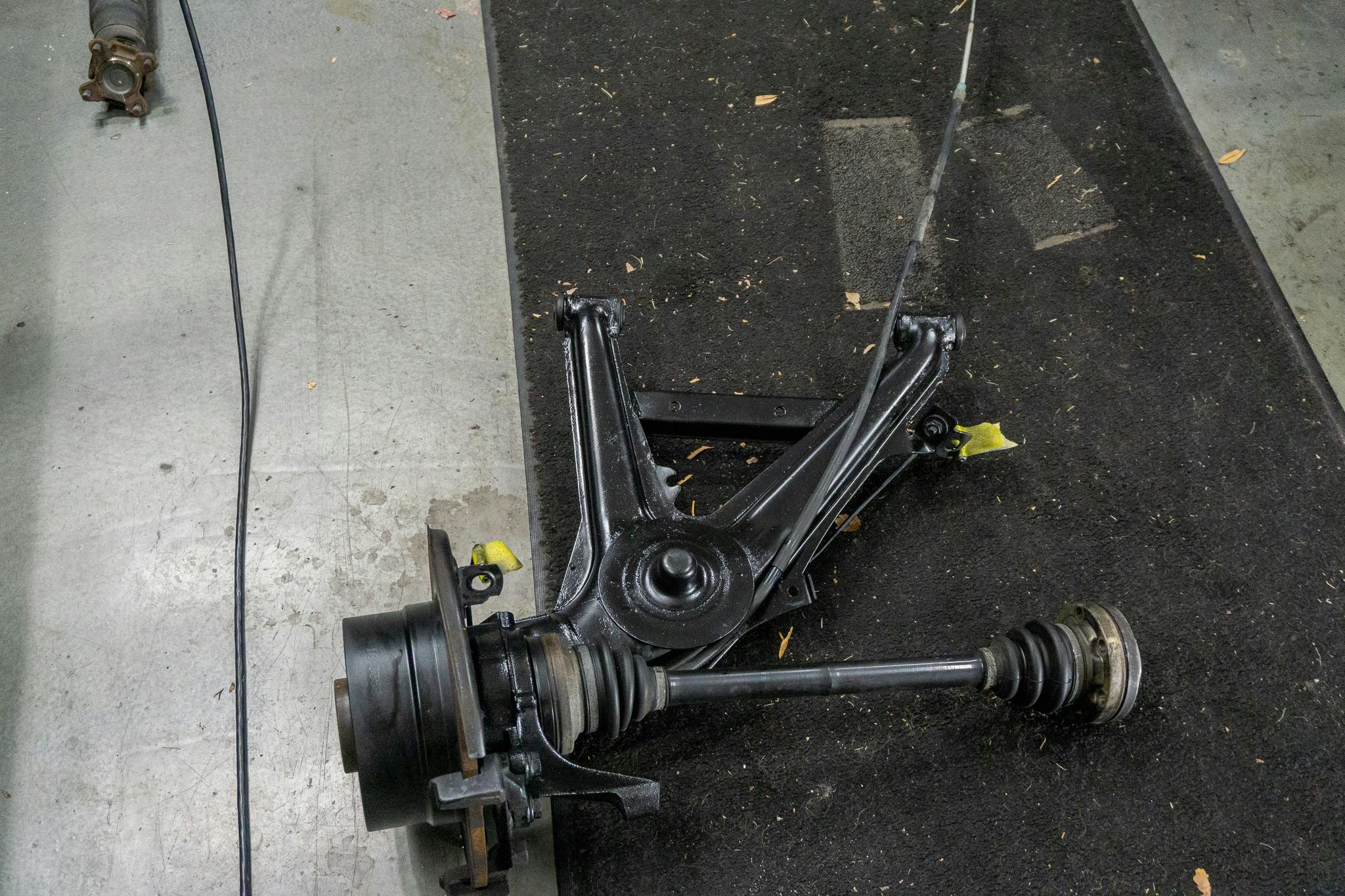
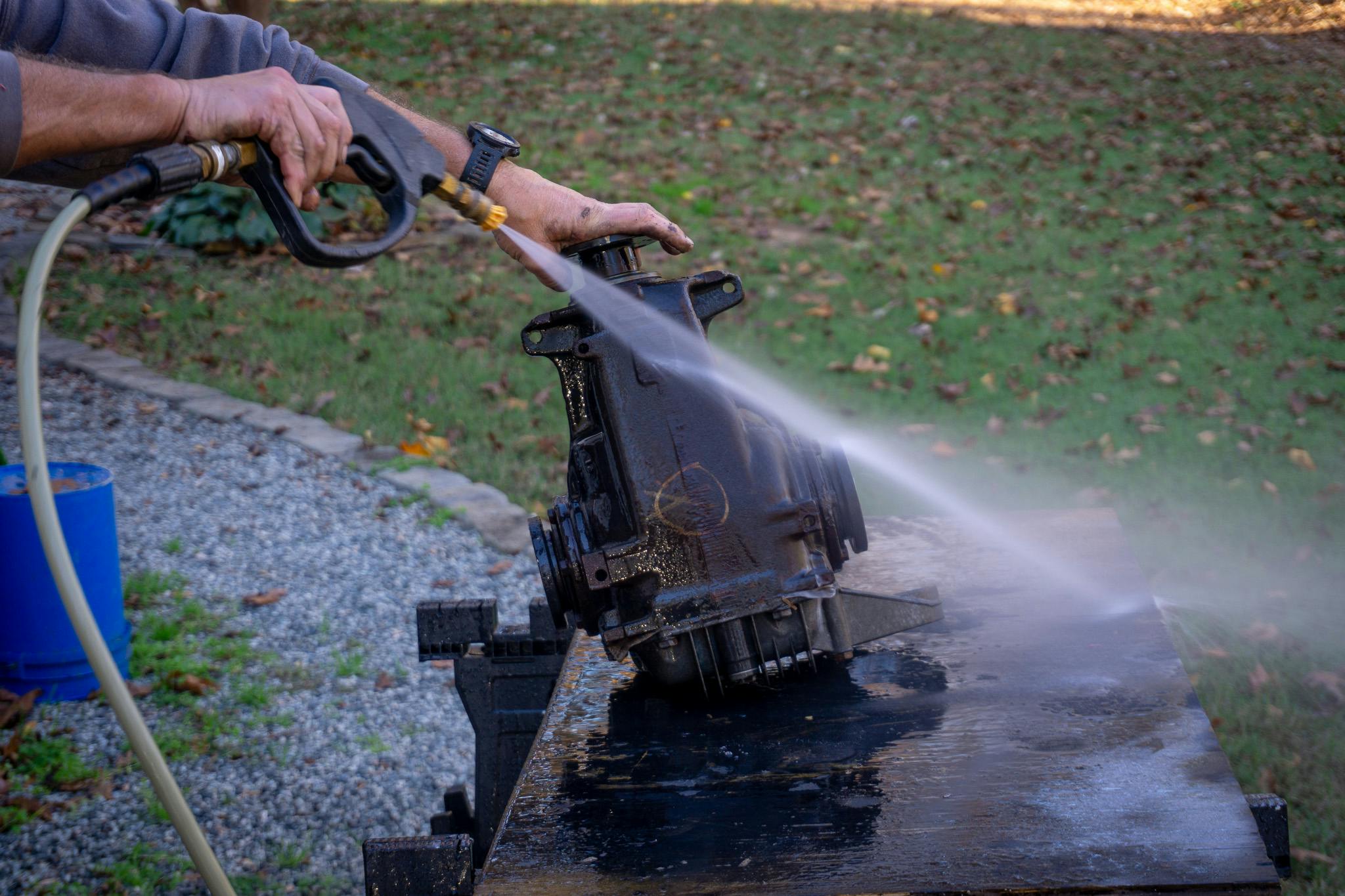
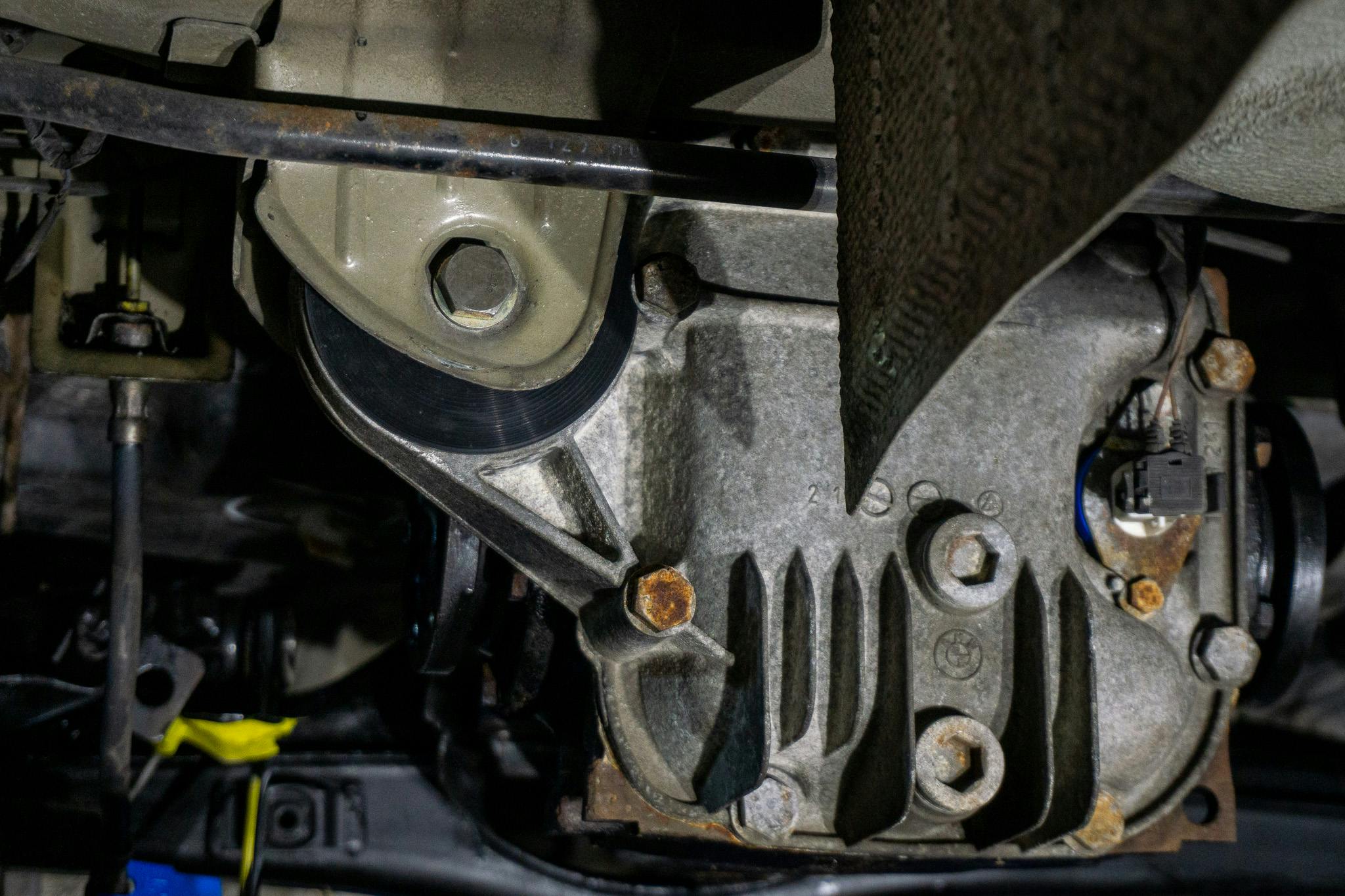
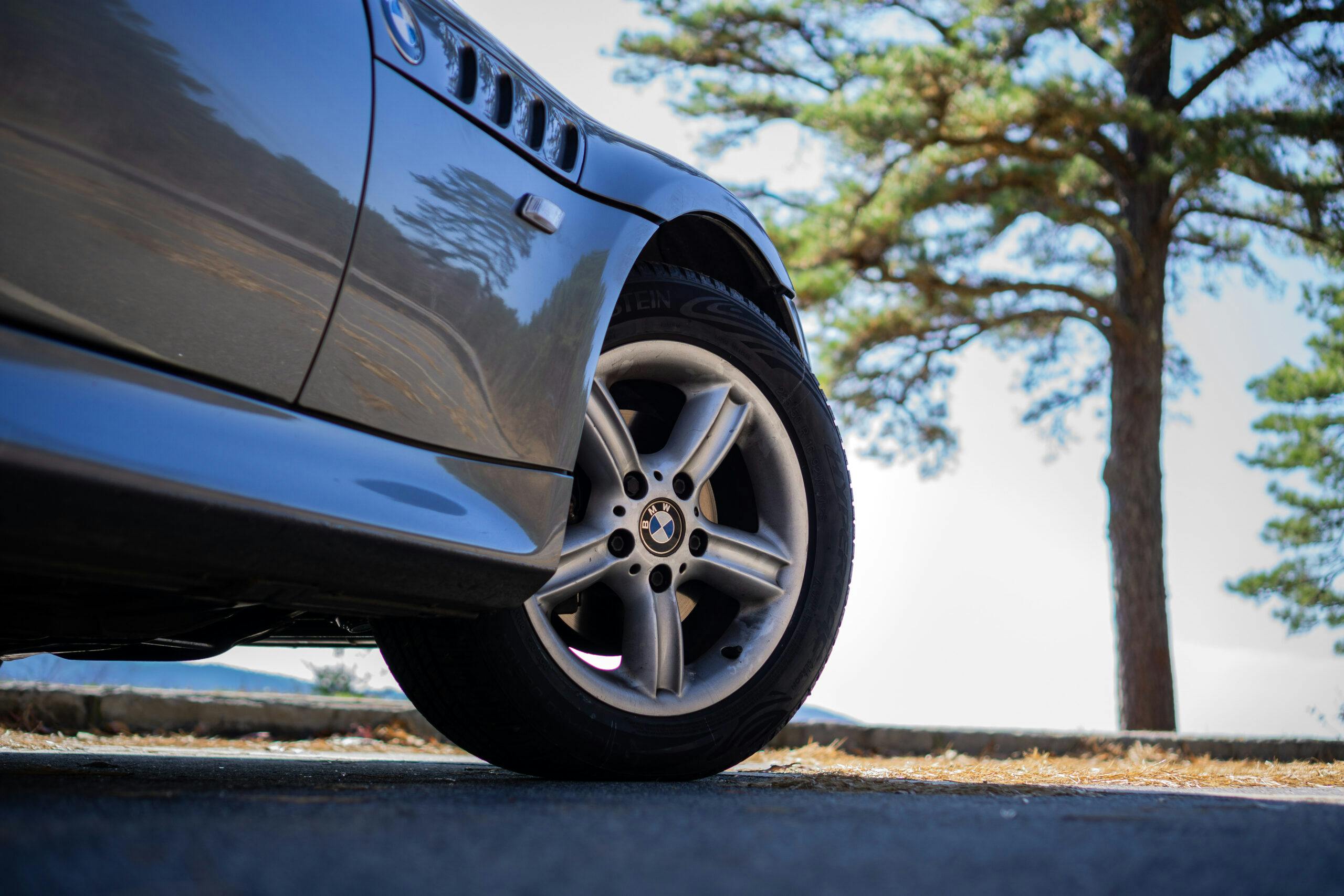

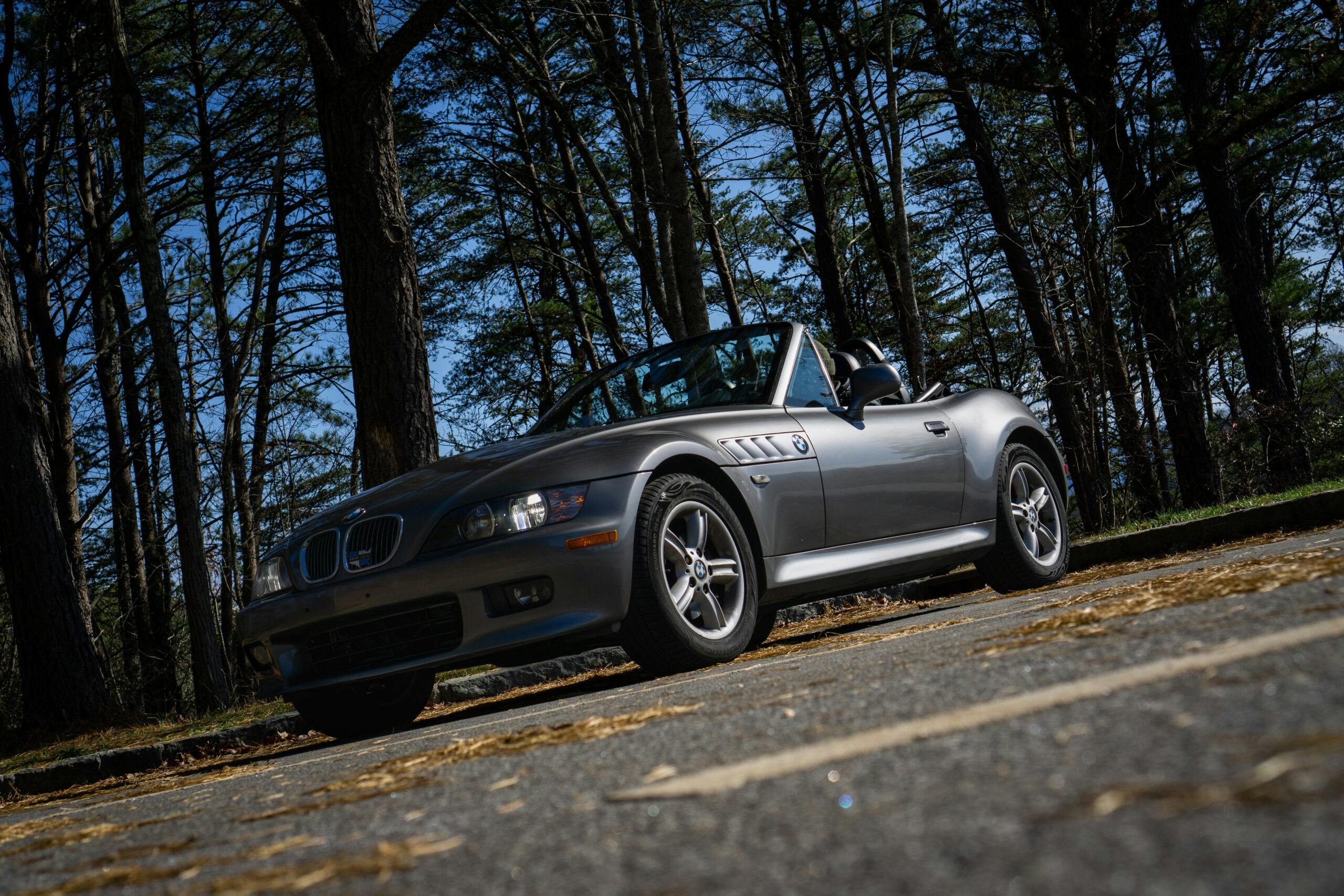
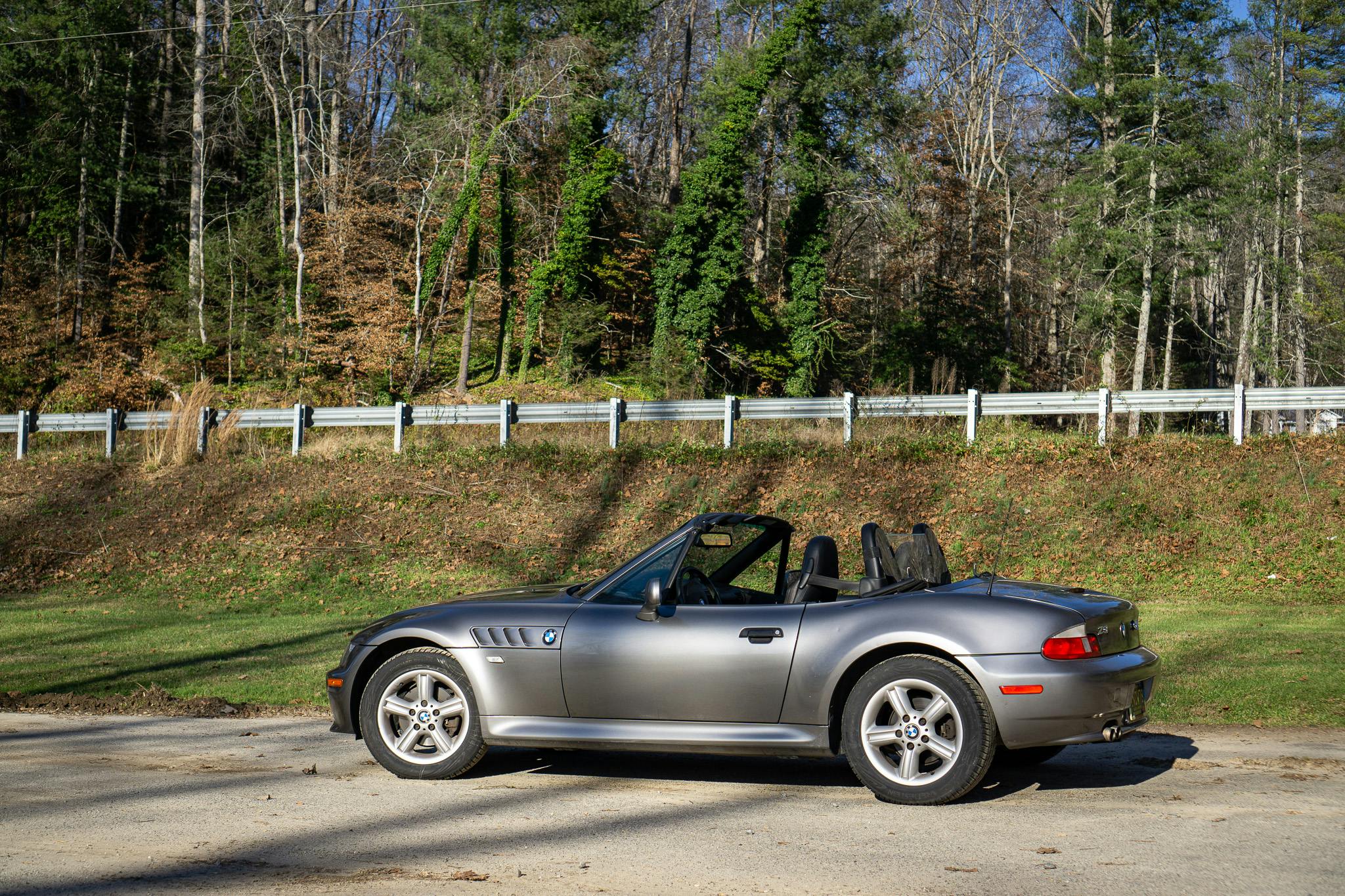
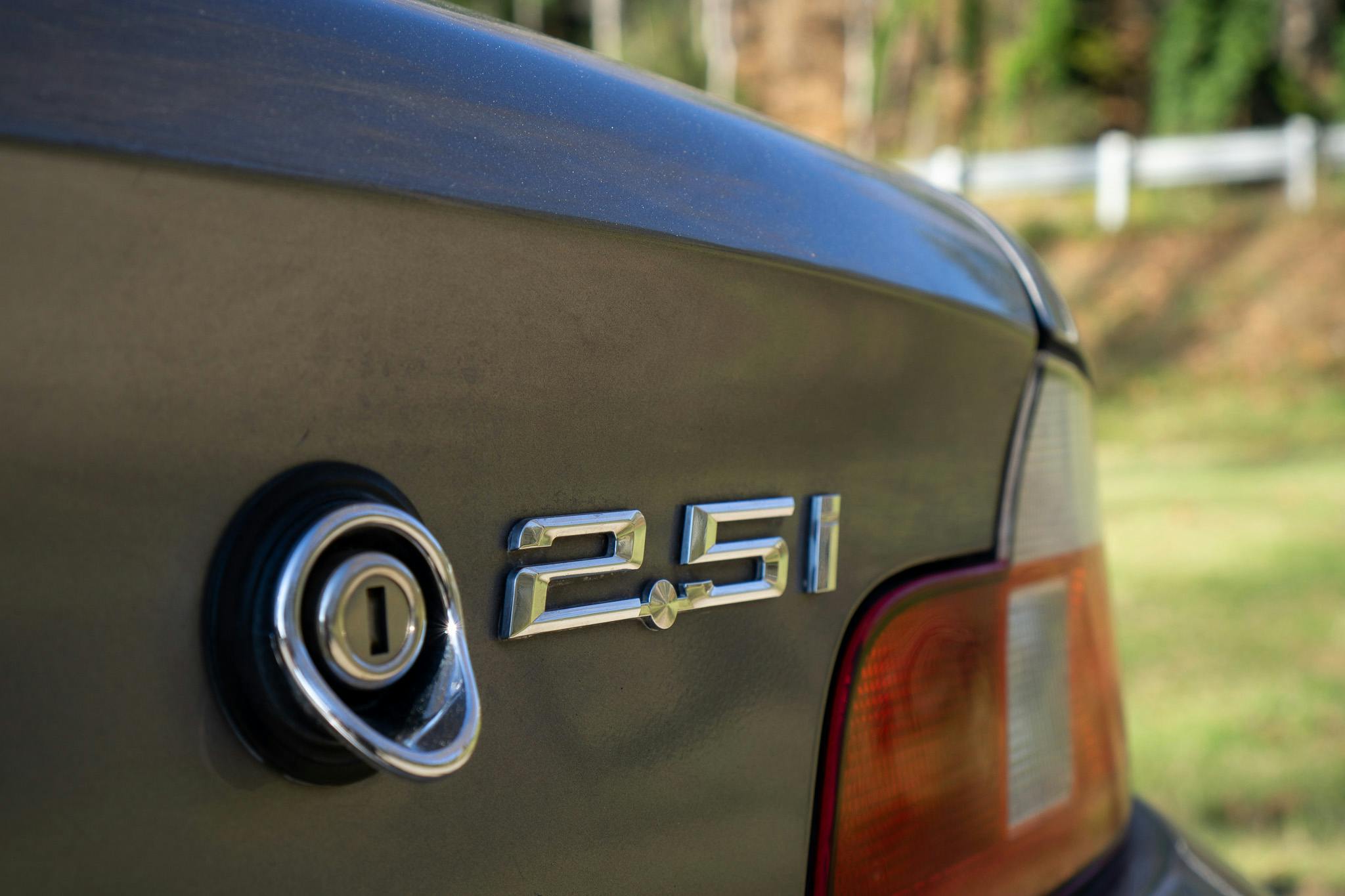
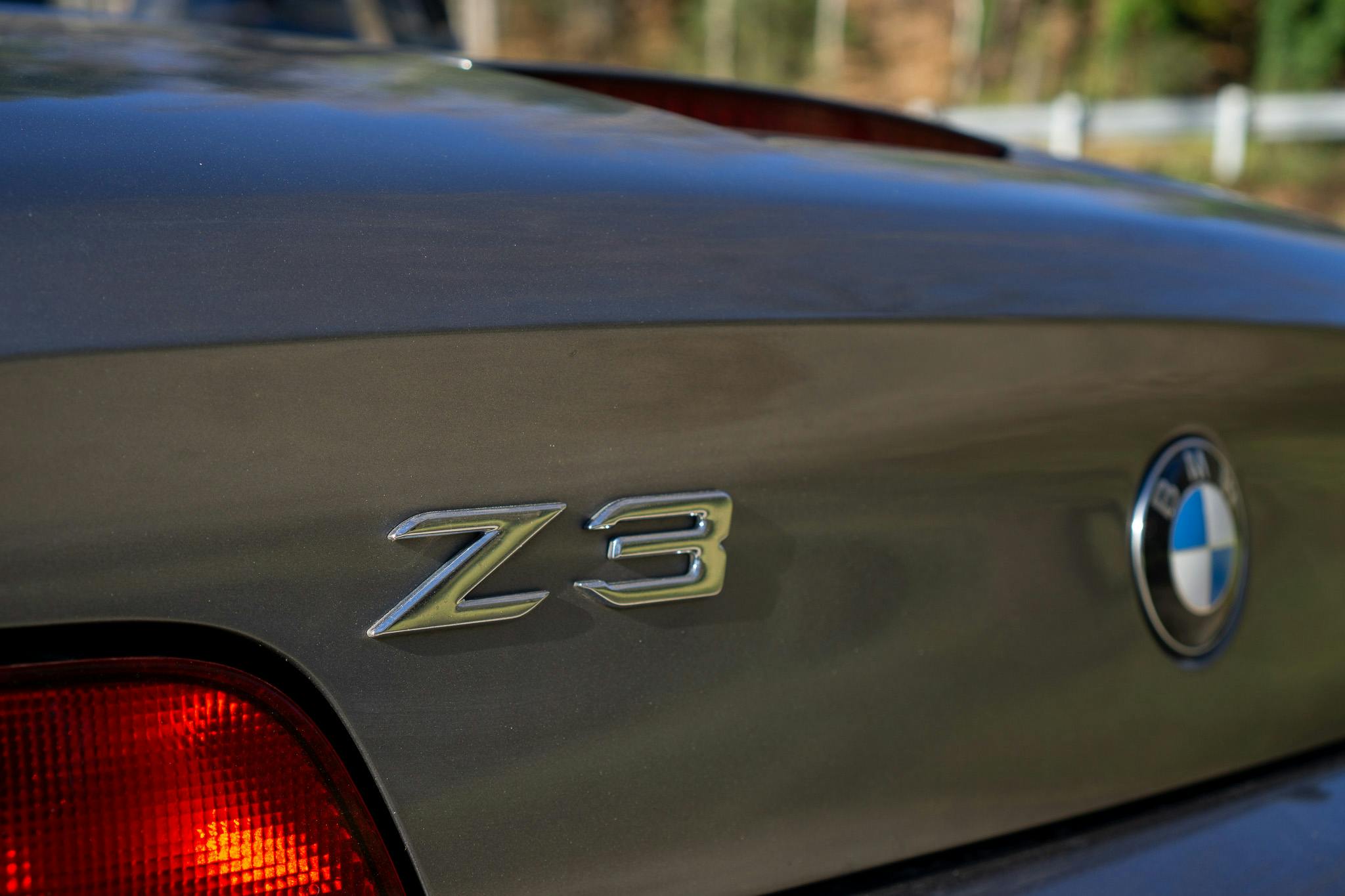
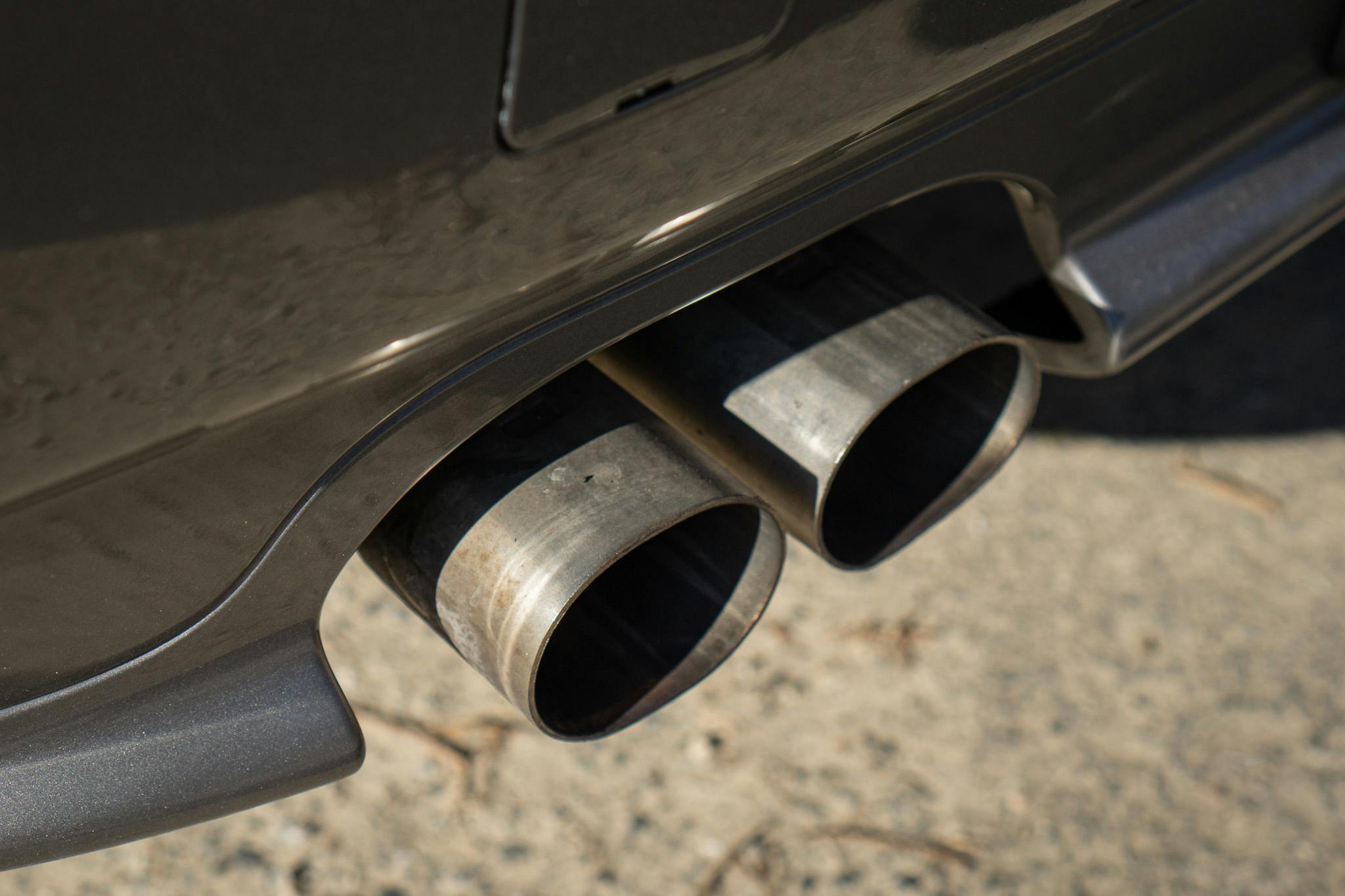
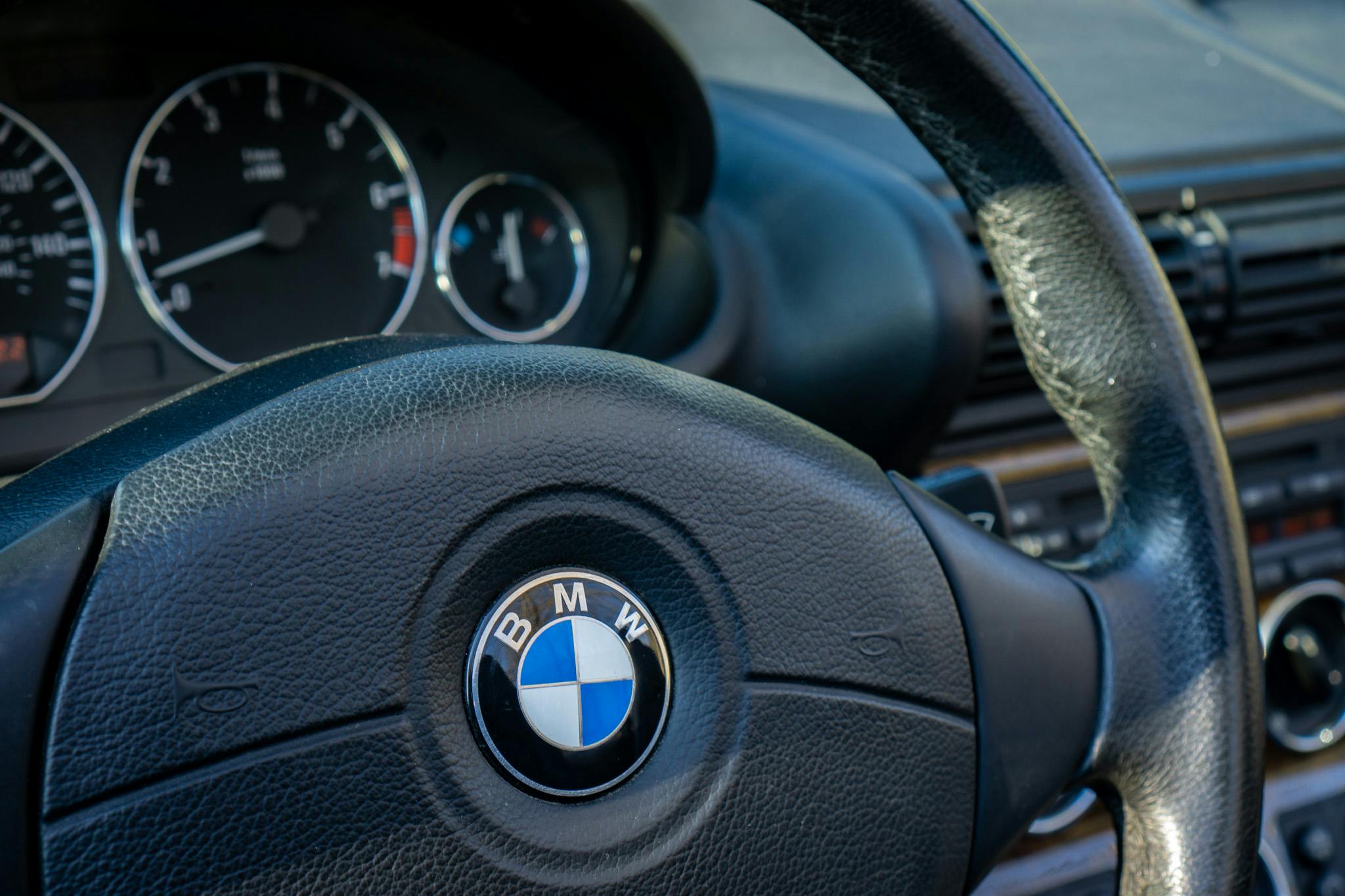
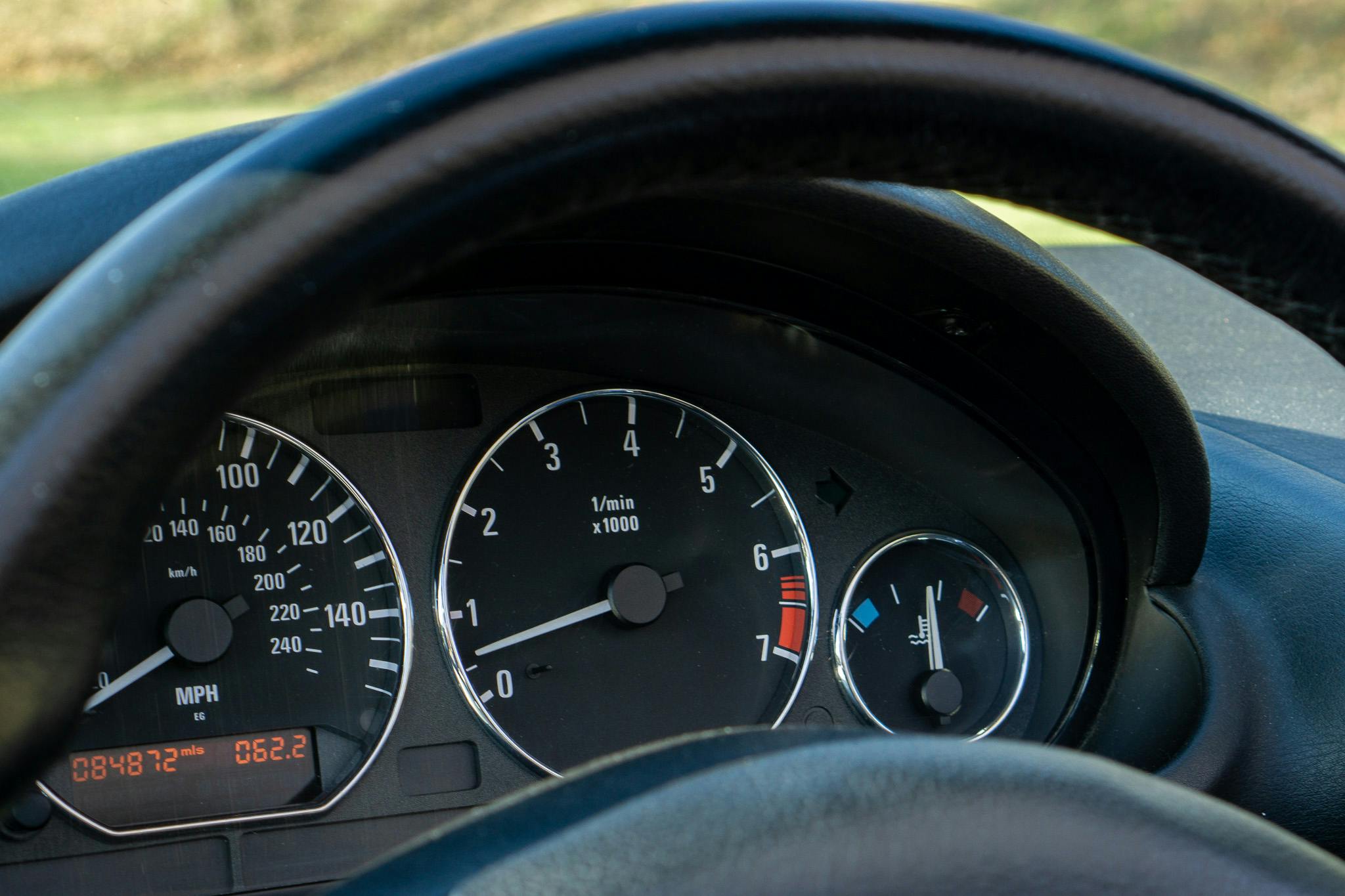

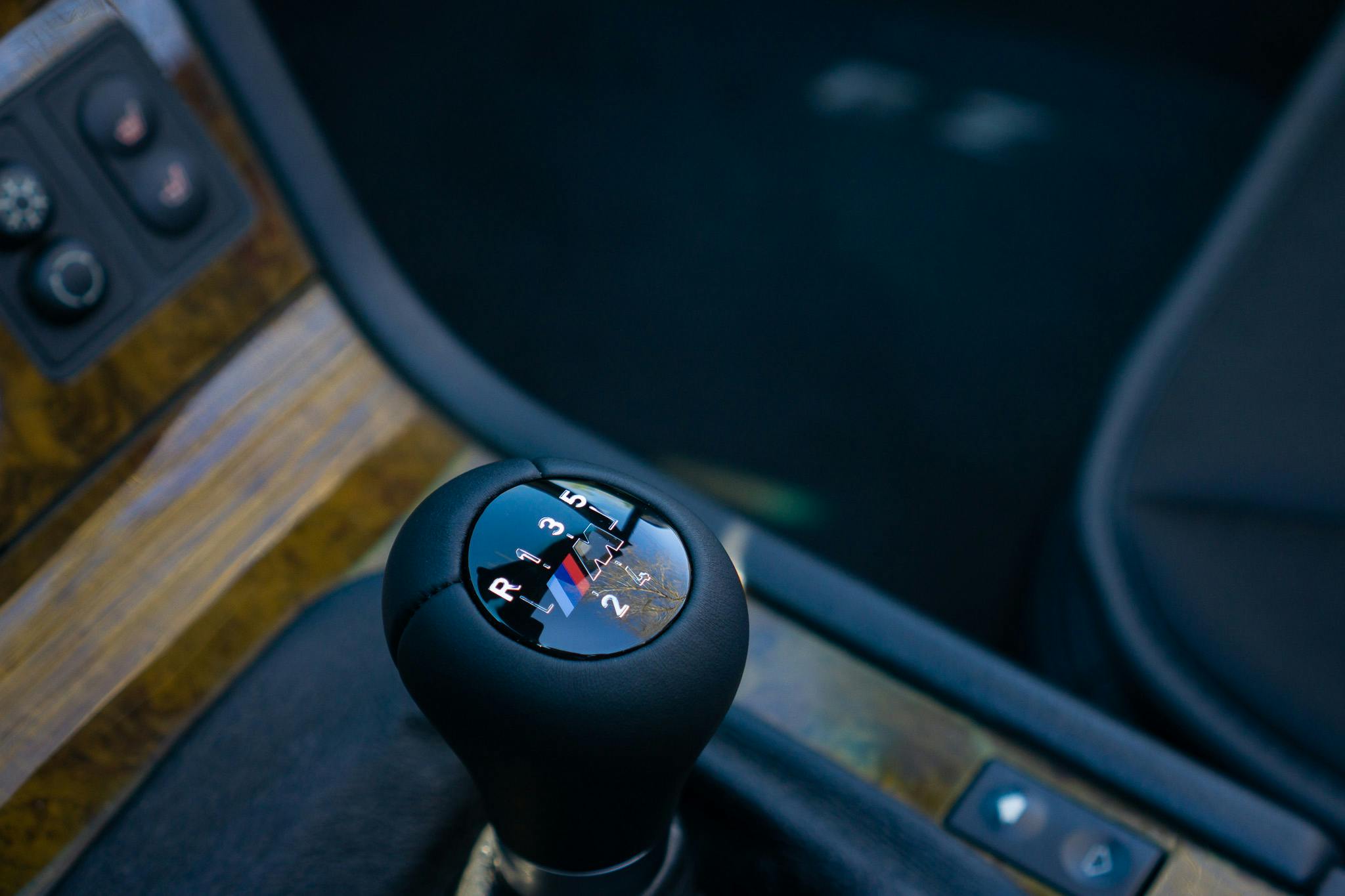

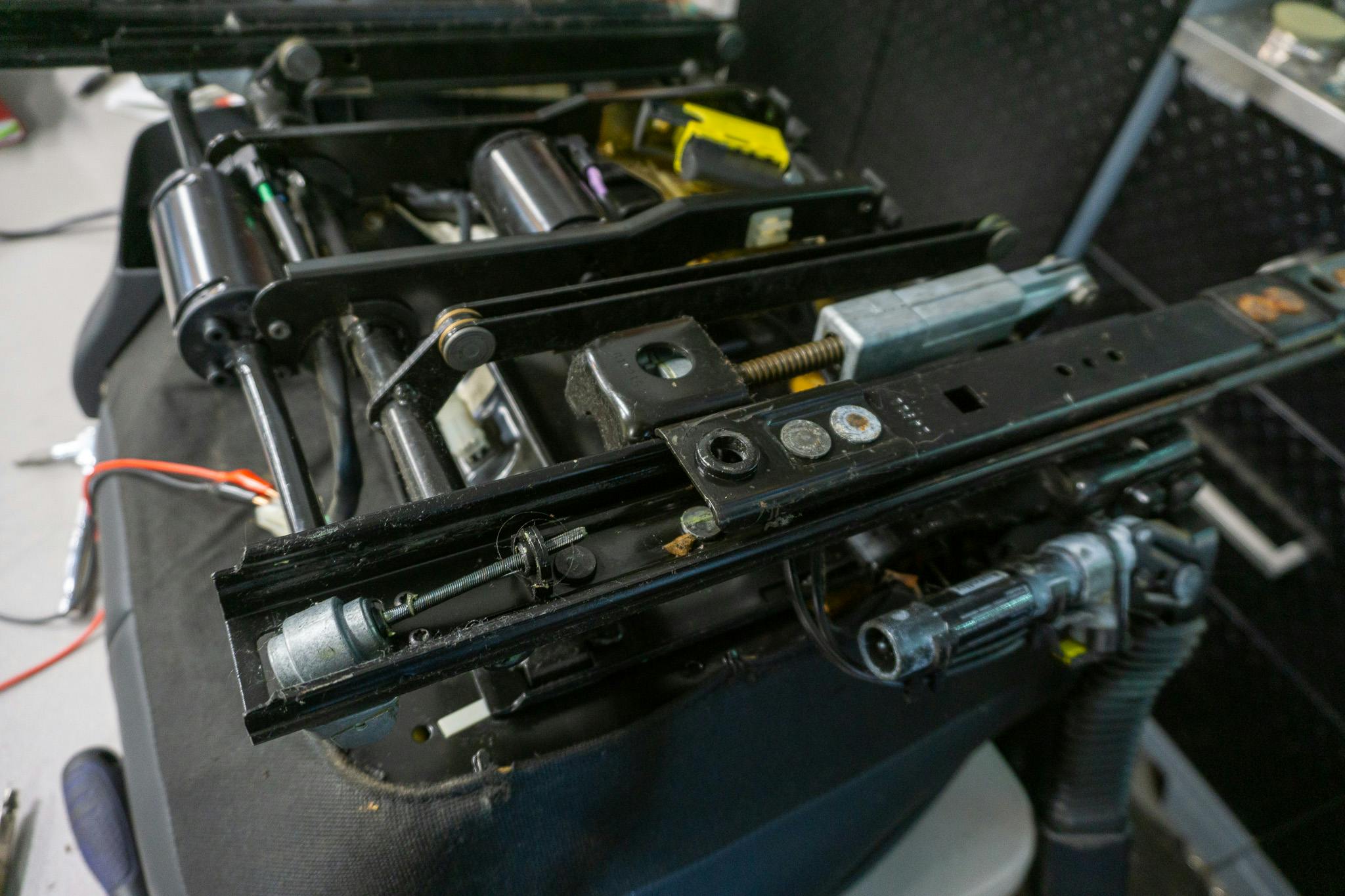
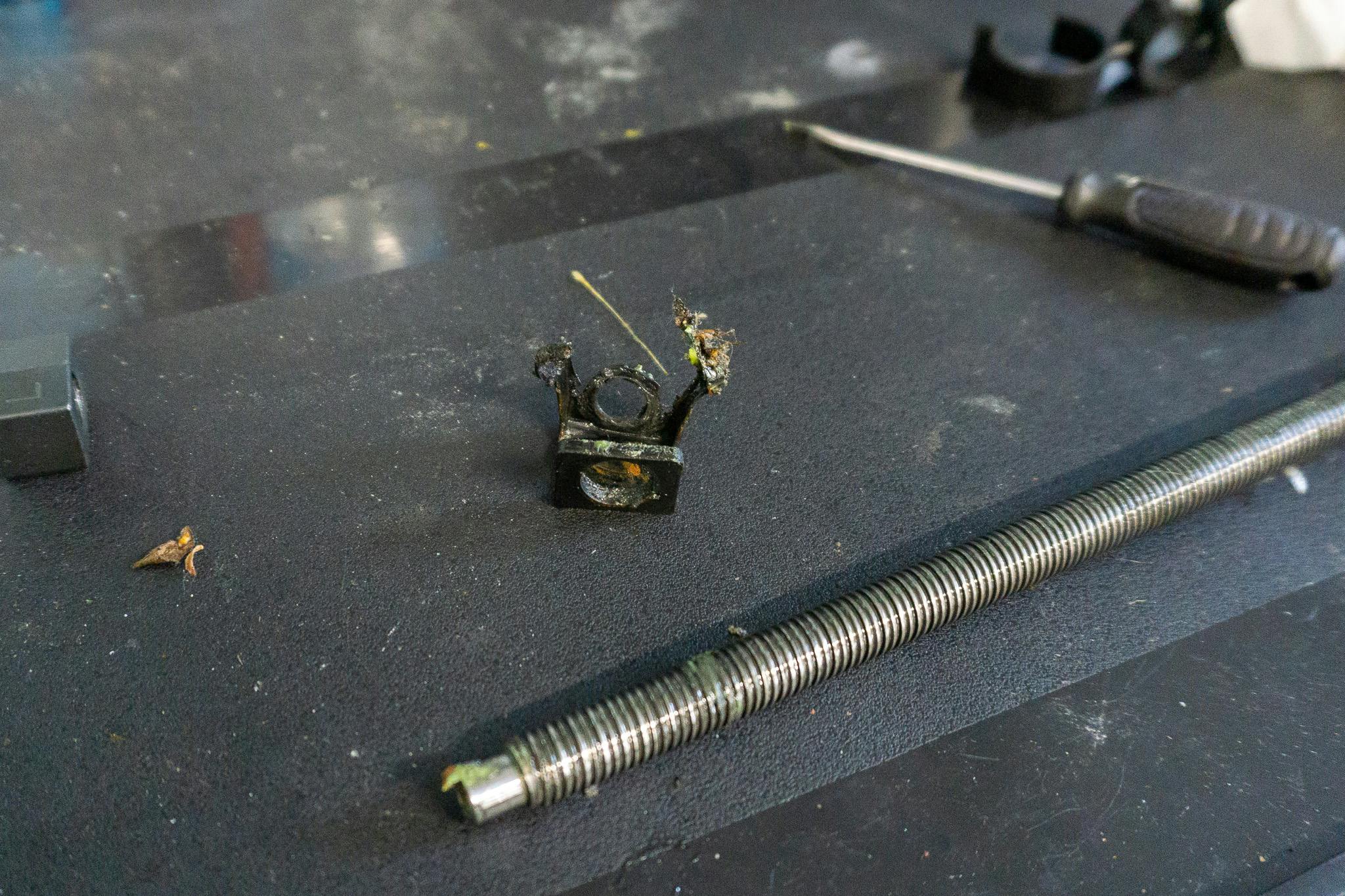
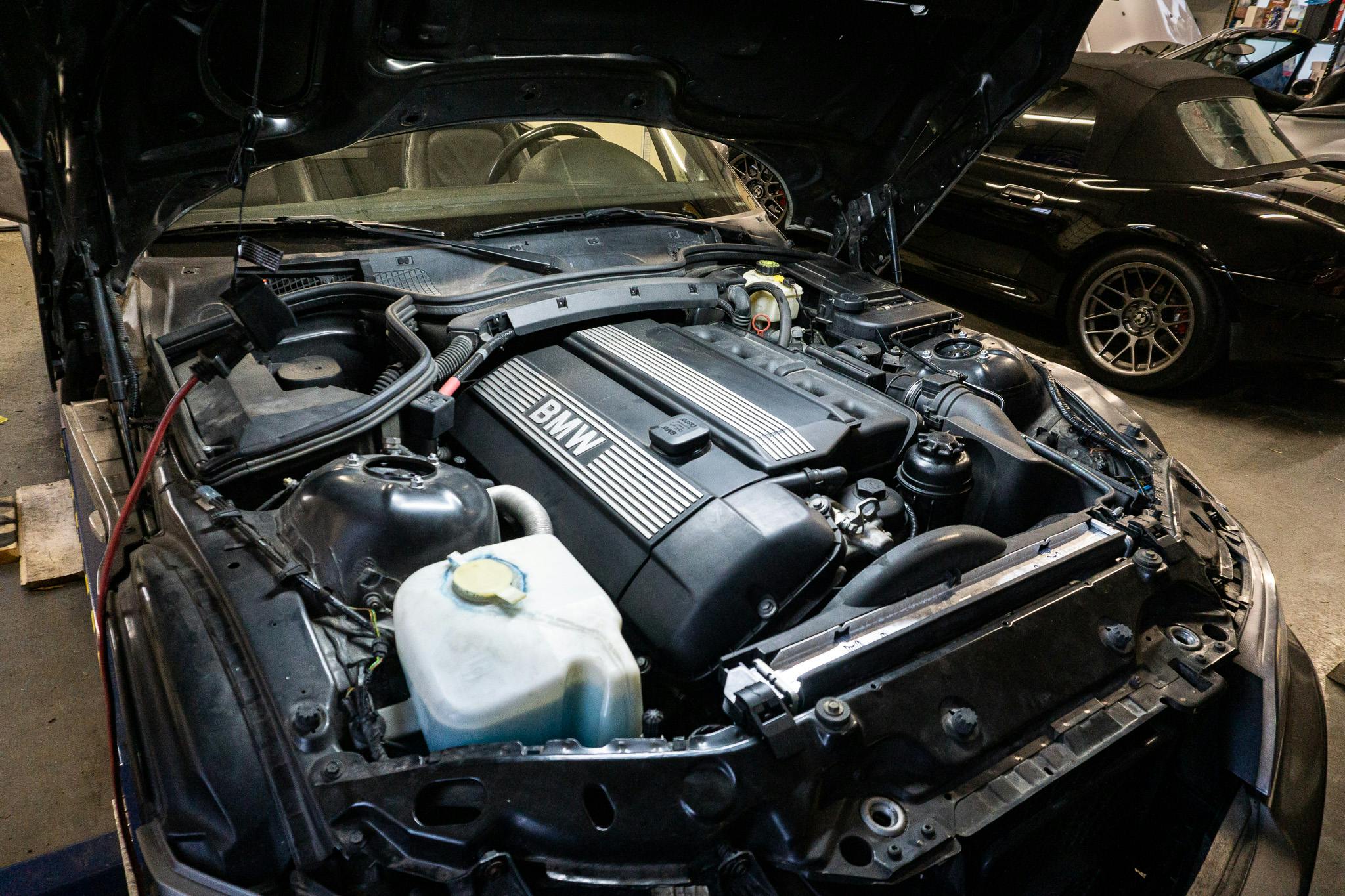
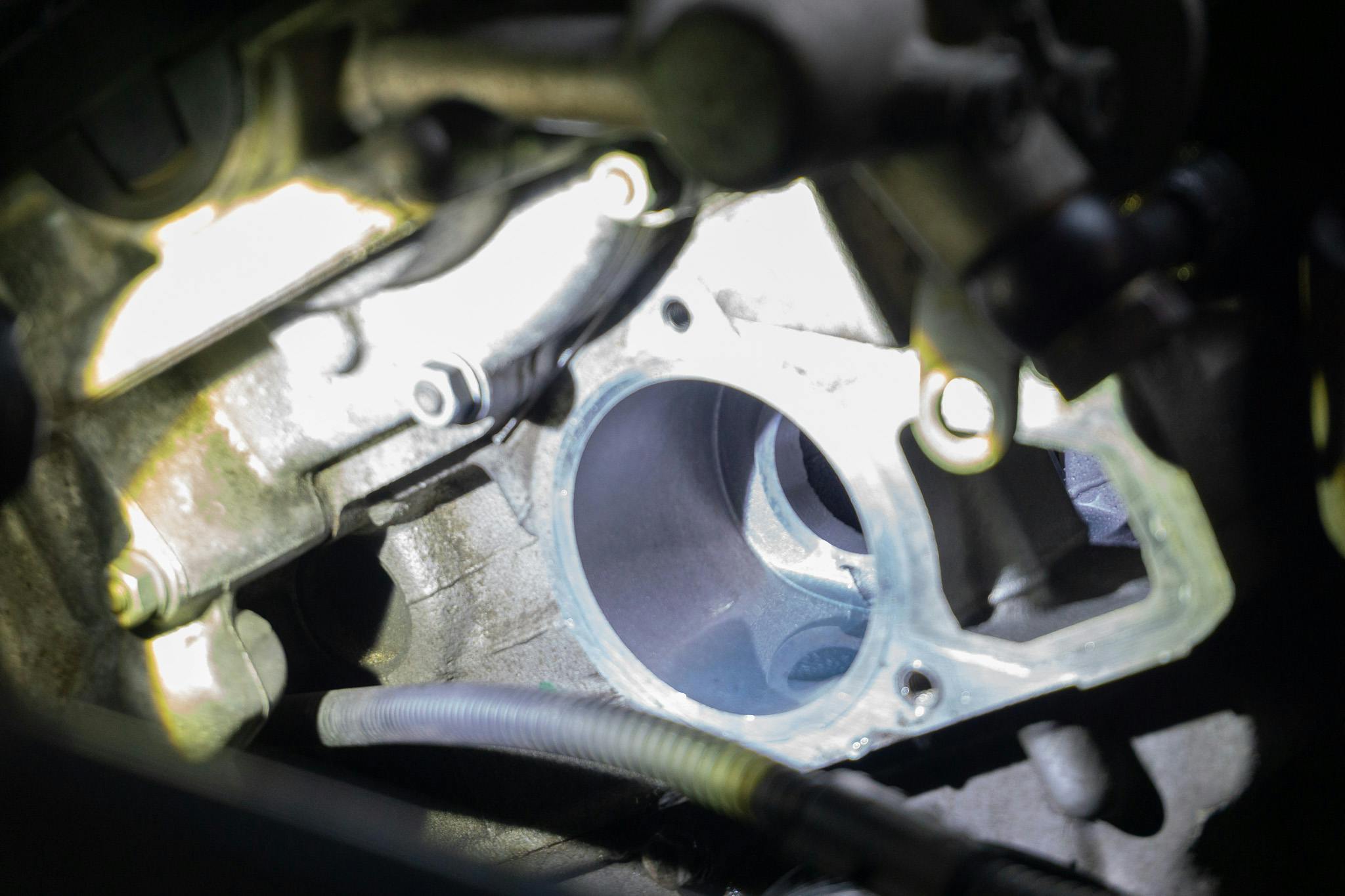

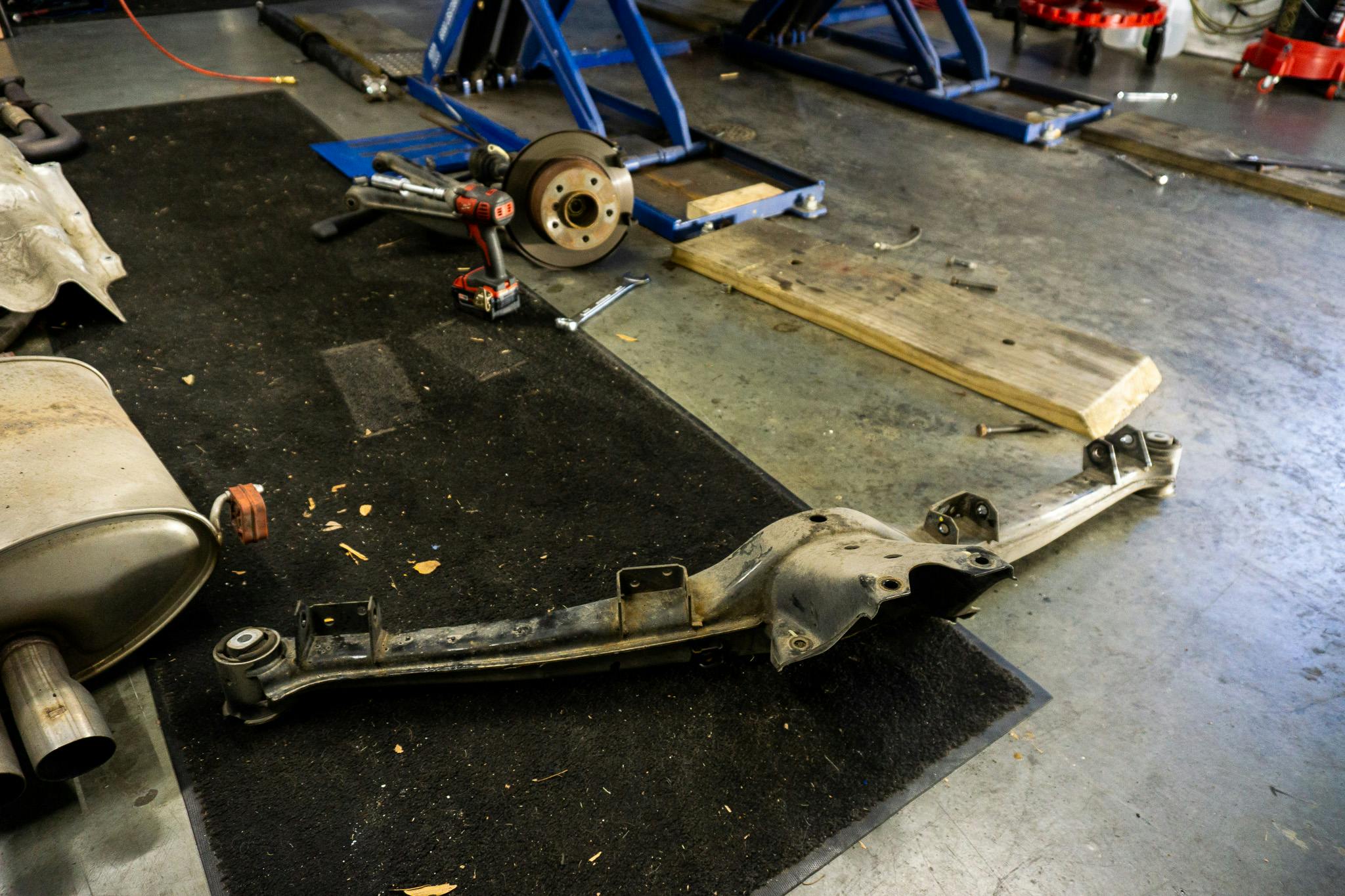




Great article. To me, Eric’s article points out the importance a well maintained classic car, as opposed to the importance of purchasing a low mileage version of what you want to own. Any twenty-plus year old car (especially BMW’s) will need this kind of maintenance to make sure the car is reliable and drives properly. A car maintained like Eric’s Z3 will be a better driver than a low mileage version of the same car. He also shows the costs of a comprehensive chassis and cooling system rebuild- not cheap! I did the same comprehensive repairs to my 2005 BMW 330ci coupe and now have a car that drives as close to as a new car as I could make it. Even better, as my car has a manual 5 speed and actual steering feel, options missing from most modern BMW’s.
A fellow five-speeder! If you’re looking for that next level of shifting enjoyment, try the ZHP weighted shift knob. I did the water pump (upgrading to a unit with a metal impeller) as a preventative measure back in 2015 or so, and that was still in great shape so Bryan recommended we leave it be.
This sounds like a healthy way to enjoy a car.
Too often people seem to be hung up on what ther car is worth, whether it is appreciating, and what it could be sold for. In my experience, the happiest car people are those who just get the car they want, and enjoy it as much as they can.
There are definitely two (at least) distinct crowds that read and comment on this venue: 1) people who buy (and sell) vehicles as monetary investments, and 2) people who just flat out have them for the challenge/fulfillment/nostalgia/fun elements of owning them. The first group looks at the spreadsheet of cost-benefit analysis to get their jollies (nothing wrong with that, BTW). The second group ignores the wallet and justifies what they do with their hearts. Occasionally, we jump back-and-forth between the two camps, but for the most part, we are what we are. I firmly know where I reside… 😉
DUB — this is a great point. There is room in the space for both outlooks. There are plenty of people who start out in Crowd 2, and then a few decades pass and suddenly it’s a car in big demand or of high value that may change the category to Crowd 1. I am not in it to make a profit, but I don’t have hostility toward the people that pay attention to that dimension of the hobby.
I have always been seated in both camps. I have been fortunate enough to generate some profit which enables me to buy the next adventure, and have formed some deep bonds that superced profits.
Even when struggling with a hard to reach broken engine mount bolt, I question my decision, but once completed the feeling of satifaction drives me into the next questionable decision.
I love everything about cars, new and old.
Excellent article Eric! The first thing I do when I buy a new ‘old’ car is update and upgrade the braking and cooling systems. Then I address any sort of steering flaws that might leave somewhere I don’t want to go: ie ditch or fence of pole. 🙂 Then I slowly improve other things while I’m driving the heck out of it.
While I do stay aware of what a vehicles value is, I don’t let it bother me too much, especially if the experience of that car is somethgin I really, really enjoy. The heart wants what it wants. 🙂
Thanks Swami! I did the rotors and pads about a year into ownership. With all of the suspension off, it made sense to do the lines at the same time.
Z/28Guy
I bought a 1969 Z/28 in 1978 and after 40 plus years I still own the car. The Camaro had a rough life prior to it coming into my hands, it was rusted on all four corners (not uncommon for an Ohio car) and the 302 was a little tired from both street and strip use. I drove it for 5 years until the engine started to “lay down” and I parked it. It languished in the garage for 30 years. After heart surgery 10 years ago I started working on my “Bucket List” and the car went right to the top. So I went to the best engine builder I could find and started the restoration. As others have said here, it’s not the value of the car that I’m concerned with it’s the enjoyment I get from it. We have several cars here at home today. But there is only one set of keys that raises my pulse rate every time I pick them up. I’ll let you guess which set it is. The car goes to my son when I am finished with it so I’m not too concerned with what it’s worth. Someone commented here on this Hagerty sight recently “Drive what you love and love what you Drive, forget about the money”…Follow this advice and you’ll be happy!!” I agree! (Hagerty Ins. post from Aug, 2022.)
As a former Bmw owner (2007 328 xi coupe) I applaud you. My car cost way too much to maintain and repair that it took away any joy I may have had. It actually turned me off of Bmw’s for good.
Z3s are surprisingly easy to maintain if you’re willing to do the work yourself, and there are several great Z3 owner forums to be found for support. Parts prices for most items are on par with the same items for my Toyota pick-up. However, if you take an older car to a BMW dealer for service or repair, it will be expensive.
I would just like to offer my congratulations. First, for bundling up and going for an al fresco ride in the cold weather. But just as importantly, for doing it with the windows down. Driving a convertible with the top down and windows up is like wearing black socks with sneakers; it looks silly. It’s an automotive fashion faux pas. Years ago, people used to know this, but when convertibles disappeared for a while (pre-Miata) the knowledge wasn’t passed along.
If I’m doing any drive of more than a couple hours on the highway, I will forgo fashion and put up the windows. Particularly with the plastic windblocker I have strapped to the roll hoops, it creates a little cocoon in which I can actually hear myself think.
I’ve only owned two convertible sports cars: a ’57 Bug-Eye Sprite and an ’80 Fiat Spyder 2000 – but I’m not ashamed to say that I used to drive them around in cold weather with the windows up and the heater blasting. And what color socks I wear with my sneakers is none of your business 😁.
Loved the article! However, I found the window position comment relative to “appearance to others” interesting. I have a ’71 MGB roadster, and I’ll configure the door windows, the top, and the zip-out rear window as necessary to keep myself reasonably comfortable. However, I do get a little high and mighty about convertible owners who drive around with the top up on gorgeous 72 degree days…
Love it! Have a 5 spd 2000 Z3 with the 2.5L engine, same color! A few more miles though, just hit 176k haha
I drive a 63 Lemans convertible top down, windows down, heater blowing full blast!
YESSS!
Come on man. A ’57 Bug Eye Sprite did not have roll up windows. I had a ’58 Bug Eye, with bolt on side curtains.
My 59 Bugeye sure didn’t have rollup sure didn’t either (BTW, Sprites didn’t come out until 58, so there was no 57 Bugeye — must have been mistaken about that one, Dub6)
I agree about the windows, though. I always had the windows down when the top was down on any of my convertibles, although lots of times with the heater on full blast 😁.
Any way to get contact info for Bryan Salgado? I steer clear of Facebook.
Email me eweiner@hagerty.com I’ll connect you.
I’ve been driving convertibles since 1967 and have three of them now. I’ve been aware of that “fashion tip” of never having the top down and windows up, since I was a teenager, so I exuberantly drive accordingly! However, one of my greatest joys has always been driving my convertible on a late fall evening, here in NYC suburbs, with the top down, windows up, heat on and my light leather jacket. Pure nirvana.
Hi audiocage, I drive my Z4 with windows and top down as much as I can. Even when cold, heated seats and heater on make for a great experience. (Also have a windblocker) As we age (I hit 71 this year) comfort is also important. (I’ve riden motorcycles for years with no windshield, I now appreciate them). I also enjoy the company of my lovely wife as much as possible (49yrsworth) and windows up and top down is a good compromise.
I couldn’t have said it better, Audiocage!
Great article. And I appreciate you touching on the finer points of owning older cars that need work. I bought a ‘65 mustang 6 cylinder coupe in 2009 for $1400. I’ve put close to 100k miles on it since I started driving it regularly in 2013. Im $28k in, but it sure beats the s*** out of buying a $28k car that may or may not have problems and will likely depreciate over time.
If you take care of the vehicle, and you’re not obsessed with resale value, you’ll have plenty of fun trips and memories. Isn’t that the whole point of driving classics? It does you no good to put it in a garage and wipe it down with a diaper, trailering to shows, and telling people not to touch it because, news flash, you can’t take it with you. So you might as well enjoy it.
Thumbs UP!!!!!
Love to find a 63 to 69 convertible that has trunk space for a week end get away. Pontiac , Buick , or Chey.
Any suggestions?
The best response so far! I bought a ’76 Tr6 in 1979 ($5400) when “I didn’t have a pot to piss in nor a window to throw it out of”! 44 years later still enjoying but truth is have not driven as much as I would like. As I am close to retirement that is going to change. But it’s only worth what someone is willing to pay for it. I get asked all the time “what’s it worth”? I say doesn’t matter it is not for sale. How many own an original car, original paint etc. always garage kept so no rust, not concourse just really nice patina and runs great. Drive the damn cars!
If you caught tinkeritis and want to work on your car, going with a German make made in America is definitely the way to go. If you want something that just plain works on its own, Japanese is the surest way.
I know how it can be when I dumped over 6 grand into my 86 GMC crewcab dually, for engine and carb rebuild upgrade and tune, engine and transmission mounts and several other things. the shop owner even tried to talk me out of it because of how rusty the truck is. But I love that old beast and thats what matters, now I just have to find a way of getting the beast better on fuel economy.
How lucky can I be? My drive is a 2002 m roadster in (400) steel gray metallic. (Almost the same color as Eric’s). Bought it in 2005 with 7,000 miles and now with 85,000. I follow your advice about timely and regular repairs and maintenance. In return, I have a drive that is an adventure every time I take it out, is different and better looking from almost anything on the road and has won trophies at BMW and concours events. Moral of this story – If you have a great car to start with and keep it that way, the car will return enjoyment and reliability to you.
I’m fortunate enough to own a few older BMWs, include an ’01 M roadster. I completely agree with over-maintaining these cars, and a $100 monthly budget for maintenance is how I budget after their age reaches 10 years. The driving enjoyment is the reward. Loved the article!
One other factor that Eric implies in the article but does not specifically mention is to be very selective in the choice of vehicle. By carefully evaluating your needs and desires and applying that to various vehicles, you end up with something that you find desirable to keep for the long term.
As an automotive engineer, I have always used this method in selecting my vehicles. I buy carefully and keep them a long time.
The other factor that is important to me is to buy used in most cases. The cars that I desire most are usually priced out of my budget when new, but fall to a reachable range within a few years. Then find the best one available.
I feel the same way about my Z3M S54. It is a fun car to be driven occasionally in the summer. Otherwise garaged and looked after. I expect it to be around for a long time.
Eric:
I am 100% on your side. I volunteer at a classic car museum. It has about 200 cars from1899 through 1989. Some are worth almost a million dollars now. But at one time, none of them were worth restoring. They are in the museum today because people like you ( and me ) loved their cars, kept it maintained and didn’t care about market value.
I have thousands of dollars more in my cars than their current market values and couldn’t care less.
Because if the investment that you have made in your Z3, you will find ownership more satisfying. The car will also be more dependable for trips.
In fact, the original idea of agreed value insurance coverage was for people who loved old cars and were willing to invest more in them than their market value.
Keep doing what you are doing and enjoy your car.
I did the same. When a young man, other engineers in my office were buying new Cameros, Mustangs, Mazdas and Datsuns. I chose Porsche 911 but could only swing a used one for the monthly payment of their new cars. That was over 50 years ago and I have always driven 911s. I’m now down to my final ‘73 that will carry me to my grave.
Do my own work and have never lost money trading them around.
In 2006 I purchased a 2004 Maserati coupe. I’ve since then put a lot of money into maintenance, but the enjoyment of driving a Ferrari built vehicle at a Maserati price cannot be measured. It’s my fun car for sure and I plan to keep it for quite awhile. Well, that might be determined by conditions beyond my control, as I am 80 years of age, but still going strong. I’ve always been a car guy and that’s a big part of what keeps me going.